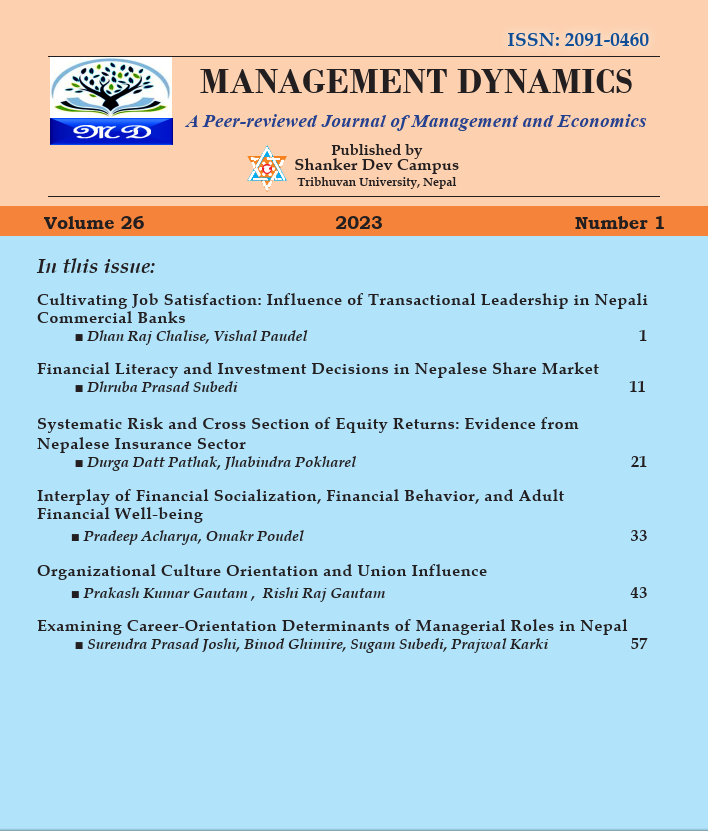Organizational Culture Orientation and Union Influence
DOI:
https://doi.org/10.3126/md.v26i1.59150Keywords:
Adhocracy culture, Clan culture, Employee union, Hierarchy culture, Organizational culture, Market cultureAbstract
Employee unions are indispensable components of organizational success. The role of the employee union, which could be a consequence of organizational culture, determines the degree of an organization’s success. This study aims to explore the employee unions’ influence on the different cultural orientations of the organization. The study is based on survey data from 23 sample organizations’ 479 respondents. This study employed a mixed approach: a qualitative approach for understanding the fundamentals of employee unions and their influence in the Nepalese context and a quantitative approach for estimating unions’ influence. OCAI to determine the cultural orientation of sample organizations. A survey questionnaire was distributed to the employees, management leaders, and union leaders as respondents to estimate the influence of employee unions. Word clouds, OCAI charts, and descriptive statistics were used to conclude the study. Findings revealed unions’ influence on organizations in different functions like recruitment and selection, training and development, compensation, and the working environment. Union influence is found to be more active and influential in hierarchy culture than in market culture. This study contributes to the Power Resource Approach and Social Exchange Theory. It encourages the organizations’ leaders to orient their culture toward market culture to foster a fair, transparent, and competitive work environment and lessen the adverse influence of employee unions.
Downloads
Downloads
Published
How to Cite
Issue
Section
License
Copyright © Research Management Cell, Shanker Dev Campus

